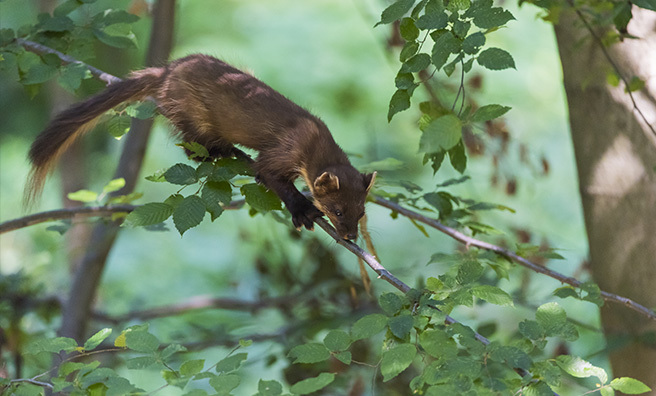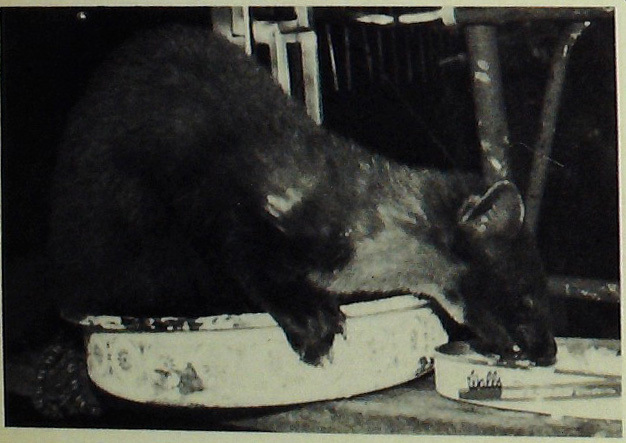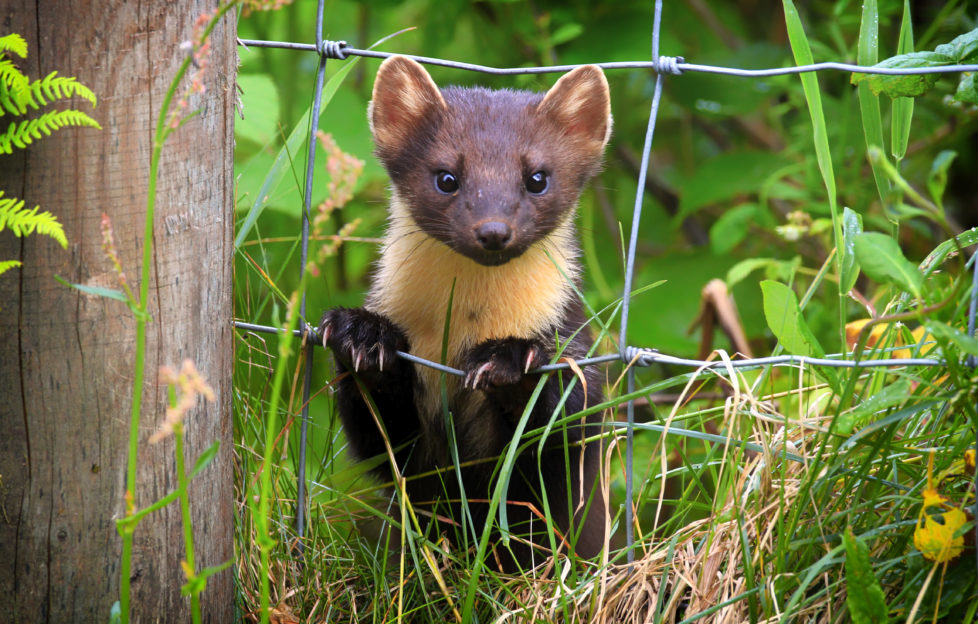Tom Weir | Pine Martens

Part 2 of Tom’s column from February 1980 on the surprising boldness of pine martens
Animal behaviour is a very strange thing, as Scots Magazine readers Mr and Mrs James E. Smith have been discovering when they put out food for a cat which was living rough in the woods surrounding their cottage in Wester Ross.
Their kindly action brought them a most marvellous present, a pine marten, that elusive nocturnal weasel of the trees which few people have seen, but which was to become very familiar to them.
The first sighting happened four years ago.
Since then, by putting out food, not just one marten but several came to the window ledge in the darkness, and ignoring the light and faces at the window got on with their eating.
One came in the open window one day and allowed itsell to be photographed without camera shyness.
Flash-bulbs don’t worry them, nor does-the sound of music, but they take notice when the radio “pips” and stare through the window at the source of the signal.
Their favourite food, the Smiths have discovered, is dead mouse, and if offered an egg they can take it gently in their mouths and leap four feet to ground without smashing it.
What has surprised them about an animal as shy as a marten is its apparent tameness round the house. If Mr Smith goes to put out fresh food they come back immediately.
The best acrobatics occur on a feeding pole for the birds which they climb to get at cheese.
An Impressive Agility
They can not only walk down the vertical pole, but pass each other without falling off, as one goes up and the other comes down.
Mr Smith writes: “I fix the fat meat so that they have to pull at it to get it off and the agility and strength of these little creatures has to be seen to be believed.”
By the different shapes of the yellow-orange bibs the observers have been able to identify eight different individuals.
Mr Smith thinks the attraction of his house is the long grass in the garden area which is riddled with mouse runs.
They grow only wild flowers and native trees which they are allowing to regenerate so there is plenty of cover for the martens.
Writing to me in November, Mr Smith was saying how lovely the pine martens were looking in their full winter coats, new, sleek and shining, the hairs extending even to the soles of the large feet with their non-retractiblc claws.
Small wonder they can out-climb any squirrel, or catch a spawning sea trout when they try.
Mr and Mrs Smith wanted to tell me about the martens because they thought if I wrote about them it might give pleasure to others and arouse a desire to protect one of our most vital wild-life species.
Alas, like the otter in Scotland, martens are not protected, which is a sad reflection on our legislators and ourselves for not demanding it.
Apparently we will have to wait until these marvellous animals are threatened with extinction before we can have protective measures taken—which is farcical.
Certainly we have more otters on the western side of Scotland than elsewhere in Britain, and pine martens, once confined to one small corner of the far North-west have spread southward into Perthshire and Argyll, and even to the Cheviots, but they are a vulnerable species.
They are immensely valuable in clearing up mice and voles, not to mention litters of young rabbits. I hope to respond to the invitation from the Smiths to watch the martens from their window.
Post publication note:
In 1988, seven years after this was written, pine martens were given full legal protection, and we are happy to report that since then the population has thrived throughout the Highlands (including Skye), Moray, Perth & Kinross, Argyll & Bute (including Mull), much of Aberdeenshire, Angus, Stirling and parts of Fife.
Read more from Tom Weir next Friday
More…
Read more from Tom!
We have an extensive archive of Tom Weir’s great columns for The Scots Magazine, and we’re slowly but surely getting them published digitally for new generations to enjoy.
To see the columns we have online so far, click here.








